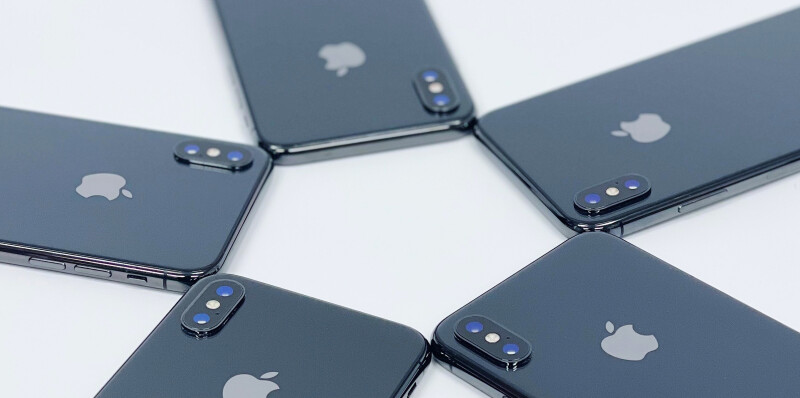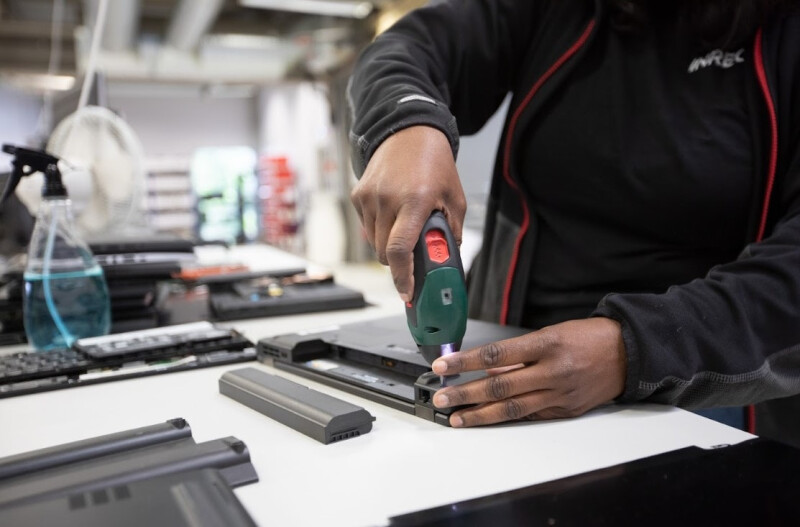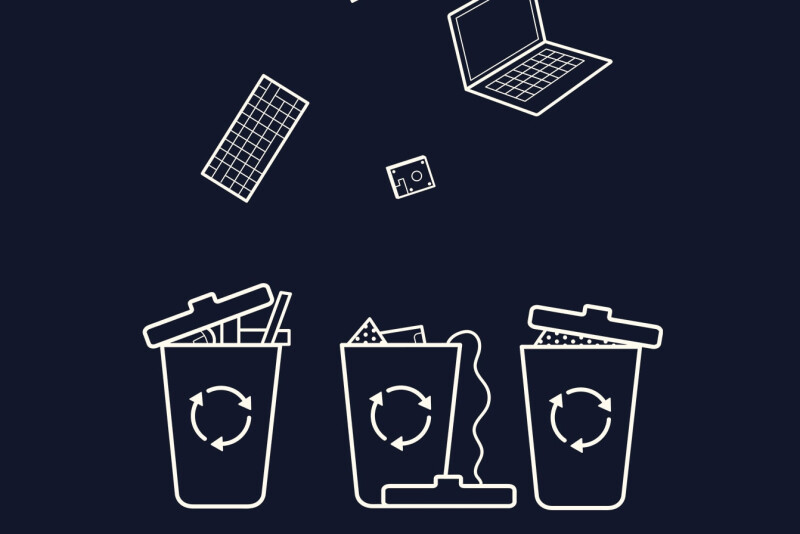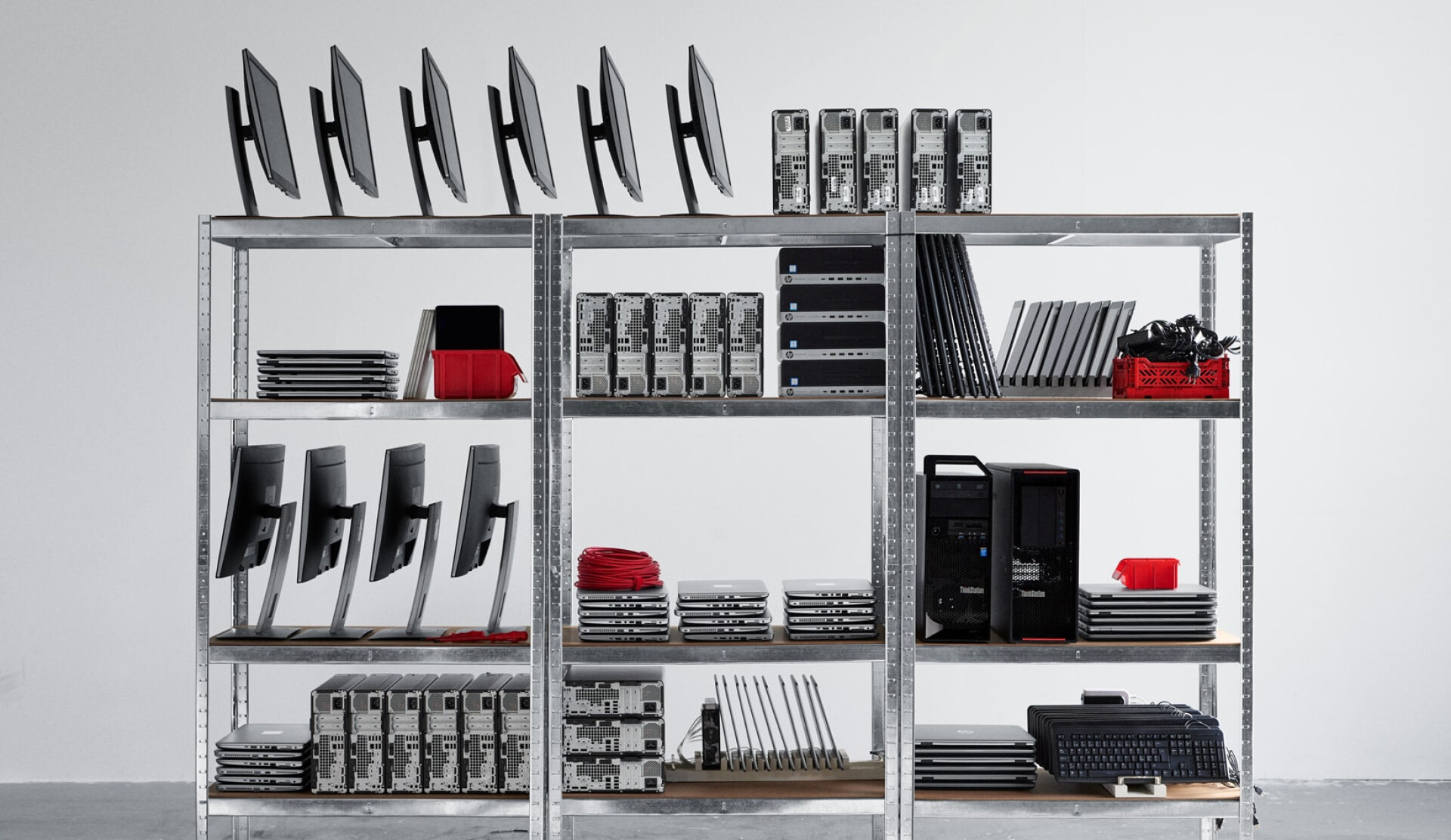
Four Steps to Achieving Carbon Neutrality
Did you know that electronics have the fastest growing waste stream globally?
That's why we need to think carefully before we produce, consume and use electronics. Making a computer requires 22 kilos of chemicals, 1,500 litres of water and 1,200 kilos of waste. Most of this waste is never seen by consumers or users because it occurs during production. IT products also contain metals and minerals that are often mined in dangerous environments where human rights are often violated.
So, how can we start using electronics more circularly?
1. Rent or buy circular IT
Buying reconditioned products is the most environmentally friendly option. You get products with the same performance and durability as new, but at half the price of new IT. In addition, you avoid unnecessary carbon emissions and do not contribute to the human rights abuses that pervade newly produced electronics.
If you do decide to buy a new computer, make sure that it is cleanly produced and that it can be reused and repaired. The TCO certificate is an example of an IT certification. When buying new IT, consider how you will use the product and how you can reuse it.
2. Use your IT product for a longer time
The circular economy focuses on the reuse of products and materials. The best option is to use products that have already been created. Is it possible to use the product for another year? Is it possible to repair the product? Can you replace the battery? Make sure you take care of your products. It will also increase the resale value of the product!
3. Re-use
When you're done with your computer, make it available to others! Extend the life of your used equipment by selling it to a reuser who can ensure it gets an extended life. At Inrego, 95% of products can be used a second time.
Make sure your IT products aren't sitting in a pile in your deskdrawer. With each passing month, it loses value and demand on the secondary market. Many devices are discarded even though they still have a high value and can be reused. Manufacturing accounts for about 80% of emissions from computers and smartphones. It is therefore important to keep them in use to reduce the environmental impact of your electronics consumption.
Components matter! Many parts of computers can be reused even when a product cannot be reused. Since the majority of emissions come from manufacturing, spare parts from one product can keep other items running. The most important thing is therefore to keep products in use for as long as possible.
4. Recycle
When it is no longer possible to extend the life of a product, it is important to recycle it safely. As recycling is the last resort for the circular economy, make sure that all other options for product extension have been explored first.
What is the carbon footprint of electronics?
Consumers and businesses are becoming more environmentally aware and the impact of consumption on the environment is becoming clearer. The main impact of electronics on the environment is during production, which accounts for around 80% of emissions - a typical laptop generates 1,200 kg of waste. Together with leading researchers at IVL Swedish Environmental Institute, we at Inrego have calculated the climate benefits of reusing electronics. For example, reusing a laptop instead of buying a new one can save as much as 280 kg of carbon dioxide emissions. For a smartphone, the figure is 55 kg co2e and 520 kg for a monitor.
You can start your journey towards a circular economy today. This is the start of a long-term commitment that will help limit climate change to 1.5 degrees in line with the Paris Agreement, protect human rights and make the IT industry more circular.
Sustainability
We help our clients move towards their environmental and climate goals to achieve the UN Sustainable Development Goals. With us, you can become circular quickly and easily.






